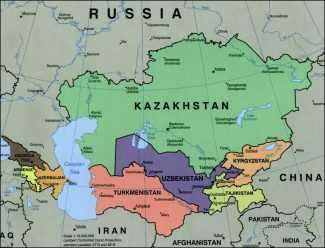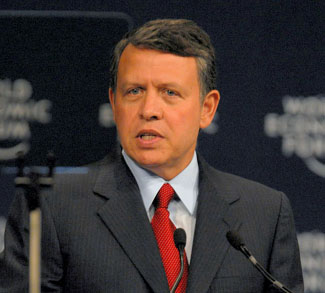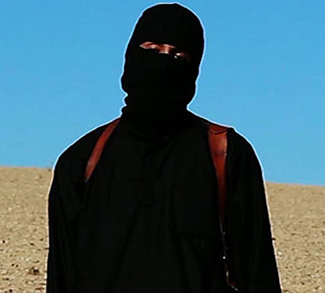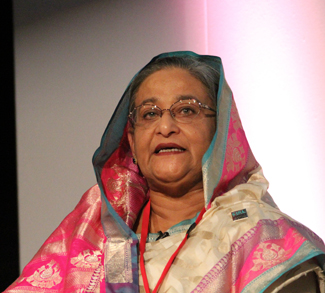In the past Central Asian governments expressed concern over foreign fighters infiltrating their territory. Now the principal concern for security services in the region is the return of Central Asian jihadists who are currently fighting in Syria and Iraq. Central Asian nationals are becoming increasingly involved in these conflicts. The Islamic State appointed a Tajik as “emir” of the northern Syrian province of Raqqa in August. In early September, an unknown local hung the black flag of the Islamic State in the Uzbek capital Tashkent. A few days later a Tajik citizen was arrested in Osh, Kyrgyzstan. Authorities allege that he was attempting to travel to Palestine in order to “join the jihad” against Israel. On September 1, Iraqi television broadcast an “interview” with a 25 year-old Tajik called Olim Yusuf. Yusuf describes how he was recruited whilst working on a building site in Russia, where some six million Central Asian migrants work. After flying to Turkey, he crossed the border into Syria, where he spent two weeks training with other Russian-speaking Islamic State militants under the command of Chechen emir Umar Shishani.
No precise statistics exist on the number of Central Asian fighters in Syria. Radio Free Europe recently estimated – based on the “best available data” – that around 410 Central Asians are fighting in Syria. This figure is undoubtedly inaccurate. For example, although Radio Free Europe estimates that there are 200 Tajik fighters, the government has reported that there are just 110. Hard evidence of just 22 Tajiks fighting in Syria exists online. No fighters from authoritarian Turkmenistan are included in the estimate. But, speaking in Moscow in October 2013, the Grand Mufti of Syria stated that there are 360 Turkmen currently in Syria. The reported 31 Uzbek fighters in Syria is decidedly low and based on reports of the activities of just one militant group.
Although it is impossible to say precisely how many Central Asians are fighting in Syria and Iraq, they likely number over 500 individuals.
Many local analysts and officials have argued that, if they return, the fighters could pose a threat to the stability of the region. According to this argument, the example set by their jihadist “brothers” could inspire Central Asians to carry out terrorist attacks in their own countries. At a regional security summit, Tajik president Emomali Rahmon summarized the governments’ concerns:
The creation of the so-called Islamic caliphate could have a direct impact on our region, despite the fact that it has nothing to do with true Islam. It is troubling when a group of persons obtain modern military weapons, which previously were under the control of the state […]. This is now the primary threat to our region.
Returnees may face stiff prison sentences if caught by the authorities. The Tajik government – despite also offering amnesty to those who return – has passed a new “law on mercenaries” according to which unrepentant militants can be sentenced to 20 years in prison. In March 2014, a Kazakh court sentenced two fighters to seven years in prison. Such punitive measures will do little to stem the tide of Central Asian fighters.
Radicalization is a complex process. No single cause prompts young Central Asians to join extremist groups. Rather, a range of reasons exist. Many Central Asian fighters are being recruited in Russia. Approximately six million Central Asians currently work in Russia. Many of them work illegally in markets and on building sites. Migrants are allegedly more “vulnerable” to radicalization. They work in low-paid jobs, often experience xenophobia and endure abuse at the hands of the government. Central Asian migrants also have the opportunity to meet other Muslims from the Caucasus. For example, Radio Free Europe reported that north Caucasian Salafists convinced six Kyrgyz nationals to join Al-Qaeda off-shoot al-Nusra in early 2013. The offer of a steady income and potential glory of becoming shadid (a martyr) in Syria is a tempting prospect for some disillusioned young migrants.
Like many young Muslims who join extremist groups, the Central Asian recruits appear to lack knowledge of the Qu’ran, Sunnah, Sharia, or hadith. This makes them more susceptible to the messages of extremist groups – which often have weak theological underpinnings. Tajik jihadist Bobojon Kurbonov’s profile is typical. After he was killed in August 2014, his brother told the media that “Bobojon was not a religious man, and we do not understand how he was persuaded to go to war.” Islamic education is strictly regulated in the aggressively secular post-Soviet Central Asian states. Years of Soviet repression has rendered Islam an important part of regional identity, but divorced it from some of the beliefs and practices seen in other parts of the Muslim world. Despite considering themselves to be Muslim, many Central Asians do not pray five times a day or fast during Ramadan.
Government repression of religion in Central Asia has produced counterproductive results and served to push more Central Asians into the arms of radical groups. The Uzbek government openly persecutes the faithful. In Tajikistan, children are not allowed to attend mosques and the government has restricted the number of students who can study in foreign madrassas. Despite professing its tolerant attitude towards religion, recent Kazakh government legislation has rendered it exceedingly difficult for religious groups to legally register. Extremist groups argue that the Central Asian governments are the enemies of Islam. By repressing religious practices, the governments merely lend further legitimacy to this message.
Although a threat from jihadist returnees does exist, it has been exaggerated by the Central Asian governments. Regional governments have developed a discourse of Islamic danger. By playing on the population’s fear of radicalization, governments have been able to legitimate some of the repressive measures outlined above. Governments have also used the conflict to discredit opposition voices. The Tajik government has claimed that arrested militants were members of the opposition Islamic Renaissance Party and accused a prominent cleric Hoji Akbar Turajonzoda of sending fighters to Syria.
It is also in the interests of the Islamic State to exaggerate the presence of foreign fighters in its ranks. Numerous recruitment videos showing Central Asian fighters have appeared on the internet. In October 2013 a video purporting to show a 150-strong Kazakh “family” of fighters in Syria appeared on the internet. Its authenticity has not been verified by the Kazakh government. Other videos have claimed to show groups of Tajiks and Uzbeks. But the jihadists in the films are yet to be identified and may not be from Central Asia at all.
Even if there are over one thousand Central Asians in Syria, this is a drop in the ocean in a region of sixty seven million people. Although some disillusioned young Central Asians will continue to heed the call to jihad, most locals will shun the Islamic State’s call for a caliphate. Most local Islamic leaders have been clear in their rejection extremist interpretations of Islam. And it is these more moderate voices that have greater support in the region.
Edward Lemon is a contributor to Geopoliticalmonitor.com




